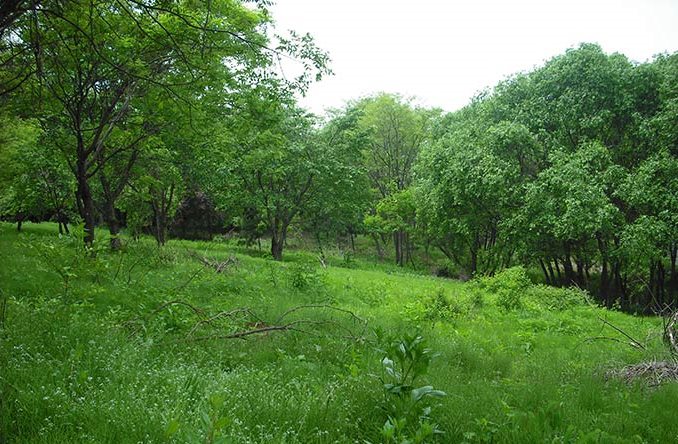Hunters and landowners interested in deer management know that the bread and butter of white-tailed deer’s diet are browse plants. Although a deer would prefer to eat higher-in-protein forbs, those plants are primarily only available during the spring and fall. Though ideal deer foods consists of preferred browse plants and high protein forbs, many of these plants are not as abundant as they could be across the landscape.
Good deer habitat always has some wooded component. This woody structure provides screening shelter, overhead protection, and food from both leaves and mast. This wooded component can range from brushland to mid-story tree species to mixed forests of a variety of species. Deer habitat can vary a great deal from place to place, but too much wooded area can become a detriment to deer and the plants they eat. Proper habitat management practices, however, can make the most out of the land you hunt.

If someone were to ask me what an ideal deer property would look like habitat-wise, I would suggest an open property that was dotted with woody plant species that comprise 50% of the land cover. In short, a property that is near 50% open and 50% wooded would be great from a deer food perspective. But what is the downside of having too many trees? Shade — sunlight can not reach the ground.
If sunlight can not reach the ground then plants will not grow there. Browse plants are great, but only if a deer can reach them. The problem in many wooded areas is that much of the browse is found in the forest canopy and is inaccessible to deer. So let’s take a page from the guys that are out there producing plants for money. In the timber production industry, periodic tree thinning is regularly used to reduce competition for sunlight.
In every wooded area, thinning can greatly increase browse production. To a white-tailed deer, some tree species are much more desirable than others. With that said, habitat management practices that involve tree thinning should target the removal of undesirable tree species. Tree thinning will open up the canopy, allowing desirable deer browse such as blackberry, honeysuckle, poison ivy, grape, and young oak species to establish and flourish.
In addition, sunlight that reaches the ground will pay dividends in the form of high-quality forbs. Always remember that although browse plants comprise the bulk of a whitetail’s diet, preferred forbs are THE most nutritious deer food. These high protein “weeds” will only grow were adequate sunlight exists. Tree thinning is a habitat management technique that can improve the quantity and quality of deer foods found on any property dominated by woodlands.
The remaining trees will also benefit from reduced crowding and deep-root competition. Less competition for water and sunlight means more production from mast-producing trees. This, in turn, means even more food for deer in thinned woodlands. Property owners interested in whitetail deer management should consider woodland thinning and the removal of undesirable tree species as a beneficial habitat management practice.
This is a wonderful article that I feel will be of great use to many landowners. So many hunters today feel thicker landscapes produce better animals.
So understanding the importance of browse versus forbs: I would like to make my suggestion for the equation. We use “motts” in the brush country of central and south Texas, finding that burning under the specific dynamic factors per location allow for exactly the right type of forbs needed for quality deer improvement.
On set schemes, the pastures and thick brush are burned using prescribed burning, usually in the fall. This allows for woody canopies to be opened and light to pass through, hence allowing for better livestock grazing and forb production. Great article!
Good article. We’ve done a lot of selective brush clearing focused on cedar in the hill country. That, along with prescribed burns and cattle have led to us taking much larger bucks than ever before. The cattle were necessary to eat the grass down so the forbs could have sunlight and not get choked out.
We’ve left several 10-20 acre thickets (mostly near feeders) along with scattered live and shin oak. Talk to a local biologist or find a book on what trees to leave and which to take out (in your region) so you can preserve your highly-desirable browse plants.